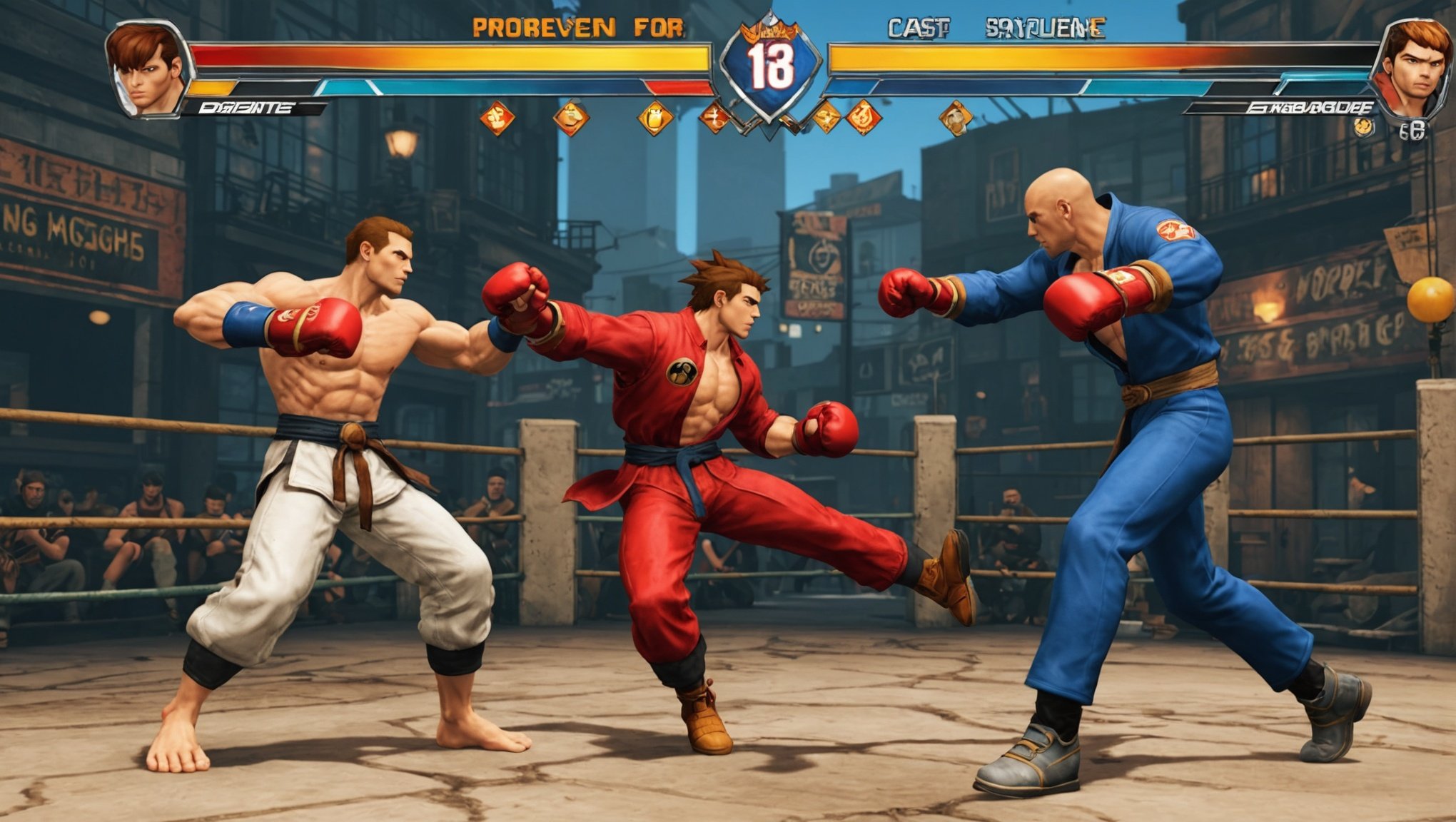Mastering Character Balance in Fighting Games: Proven Strategies for Fair Play
The Importance of Character Balance in Fighting Games
Character balance is the cornerstone of any successful fighting game. It ensures that each character, despite their unique abilities and playstyles, has an equal chance of winning against any other character. This balance is crucial for maintaining the integrity and enjoyment of the game, especially in competitive environments.
In fighting games, character balance is not just about ensuring that no single character is overpowered, but also about creating a diverse and engaging gameplay experience. For instance, in games like Street Fighter and Mortal Kombat, the roster includes a wide range of characters, each with their own strengths and weaknesses. This diversity allows players to choose characters that fit their playstyle, making the game more appealing to a broader audience.
In the same genre : Exploring the Hurdles of Integrating Voice-Controlled Interfaces in Strategy Games: Key Challenges Unveiled
Key Elements of Character Balance
Move Sets and Combos
Each character in a fighting game has a unique set of moves and combos that define their playstyle. Ensuring that these move sets are balanced involves several factors:
- Damage Output: The amount of damage a character can deal should be proportional to their other attributes, such as speed and defense.
- Execution Difficulty: Moves that are harder to execute should generally offer more reward in terms of damage or other benefits.
- Frame Advantage: The timing of moves, including startup, active, and recovery frames, must be balanced to prevent any character from having a significant advantage in most situations.
For example, in Street Fighter, characters like Ryu and Ken have powerful combos but are relatively straightforward to play, while characters like Zangief have more complex movesets that require precise timing but offer significant rewards.
This might interest you : Top Strategies for Seamless Real-Time Voice Modulation in Multiplayer Gaming
Health and Defense
Characters’ health and defensive capabilities are also critical aspects of balance. Some characters might have more health but be slower, while others might be faster but more fragile. This trade-off ensures that no character is invincible and that each has their own strategic depth.
In Mortal Kombat, characters like Goro have a lot of health but are slower and more vulnerable to quick, agile characters like Scorpion. This balance encourages players to use different strategies depending on the character they choose.
Balancing Different Archetypes
Fighting games often feature various character archetypes, each with its own unique playstyle. Here are some common archetypes and how they are balanced:
- Grapplers: Characters like Zangief in Street Fighter or Goro in Mortal Kombat are strong in close combat but often struggle with keeping opponents at a distance.
- Example: Zangief’s powerful grappling moves are balanced by his slow movement speed and vulnerability to projectiles.
- Zoners: Characters who excel at keeping opponents at a distance using projectiles.
- Example: Dhalsim in Street Fighter has long-range attacks but is vulnerable in close combat.
- Blenders: Characters who can switch between different playstyles, such as switching between melee and ranged attacks.
- Example: Shang Tsung in Mortal Kombat can switch between different characters, each with their own moveset, but this ability comes with significant resource costs and cooldowns.
Testing and Feedback
Ensuring character balance is an ongoing process that involves extensive testing and feedback from players.
Playtesting
Playtesting is crucial for identifying balance issues. Here are some key techniques used in playtesting fighting games:
- Versus Mode Testing: Players test characters against each other in various matchups to identify any significant advantages or disadvantages.
- Tournament Feedback: Feedback from competitive players during tournaments can highlight balance issues that may not be apparent in casual play.
- Community Input: Online forums and social media platforms provide valuable insights from the broader player base.
For instance, the Street Fighter 6 community has been actively involved in providing feedback on character balance, helping the developers to make adjustments and ensure a more balanced gameplay experience.
Using Data and Analytics
Modern game development often incorporates data analytics to fine-tune character balance. Here’s how it works:
Data Collection
Games can collect data on how characters are played, including metrics such as:
- Win/Loss Ratios: How often each character wins or loses against other characters.
- Move Usage: Which moves are used most frequently and their success rates.
- Player Input: Analyzing player inputs to understand common strategies and potential exploits.
AI-Driven Balance
AI can be used to analyze this data and suggest balance changes. For example, AI can identify patterns in player behavior and suggest adjustments to move sets or attributes to maintain balance.
| Character | Win/Loss Ratio | Most Used Move | Success Rate |
|
|---------------|
|-------------|
| Ryu | 50% | Hadouken | 70% |
| Ken | 52% | Shoryuken | 75% |
| Zangief | 45% | Spinning Piledriver | 60% |
This table illustrates how data can be used to identify balance issues. For example, if Ryu’s Hadouken has a high success rate but Ken’s Shoryuken has an even higher success rate, it might indicate that Ken’s move is overpowered and needs adjustment.
Practical Insights and Actionable Advice
Here are some practical tips for developers and players to ensure character balance:
For Developers:
- Regular Updates: Regularly update the game with balance patches based on community feedback and data analytics.
- Community Engagement: Engage with the community to understand their concerns and gather feedback.
- Playtesting: Conduct extensive playtesting with a diverse group of players to identify balance issues.
For Players:
- Experiment with Different Characters: Try out different characters to understand their strengths and weaknesses.
- Watch Competitive Play: Watch professional players to see how they use characters and identify strategies.
- Provide Feedback: Share your experiences and feedback with the developers to help improve the game.
Mastering character balance in fighting games is a complex and ongoing process. It requires a deep understanding of game mechanics, extensive playtesting, and continuous feedback from the community. By using data analytics, engaging with the community, and ensuring that each character has a unique but balanced playstyle, developers can create a game that is both fun and fair for all players.
As ParadisePrime from Reddit noted, “If a dev was REALLY dedicated, I’m 99.98% sure this strategy could be used to balance massive rosters of unique characters. You’d still need a strong foundation though so it’s not doing all the work.”
In the world of fighting games, balance is not just a feature; it’s the foundation upon which the entire game is built. By focusing on balance, developers can create games that players love, celebrate, and support for years to come.











